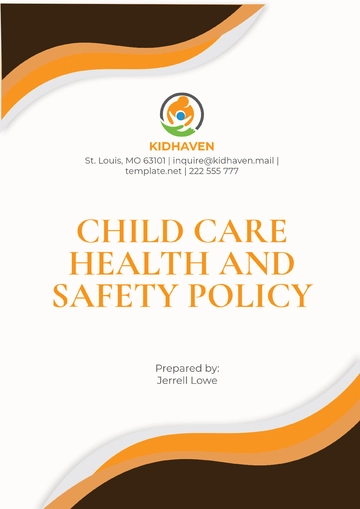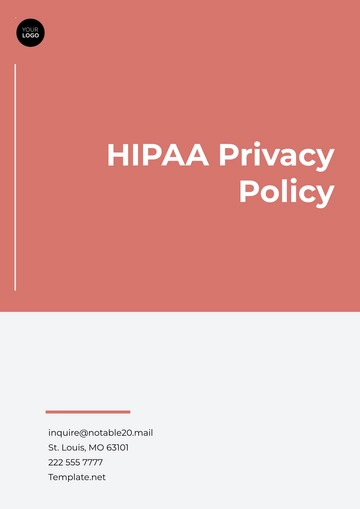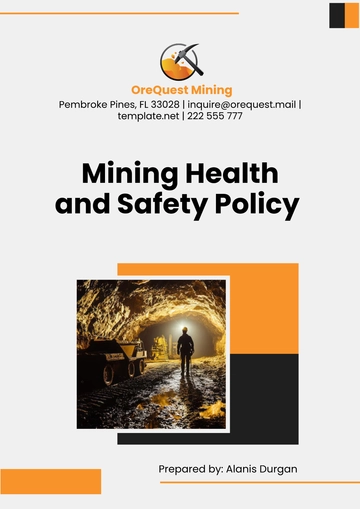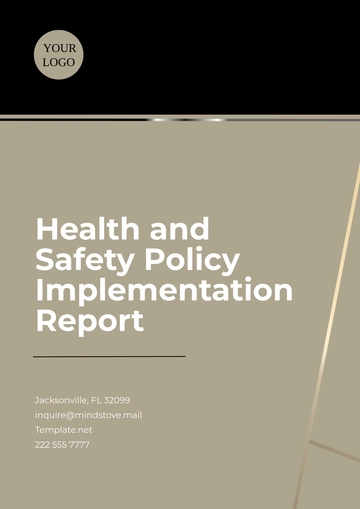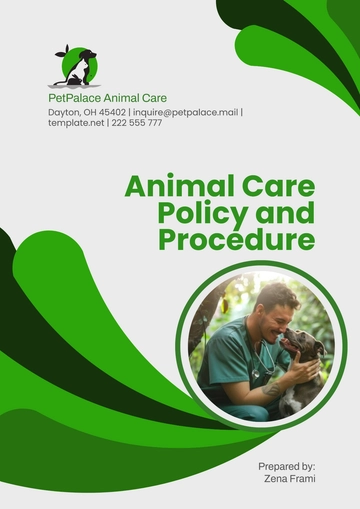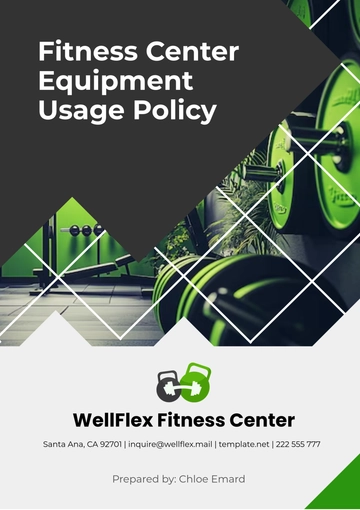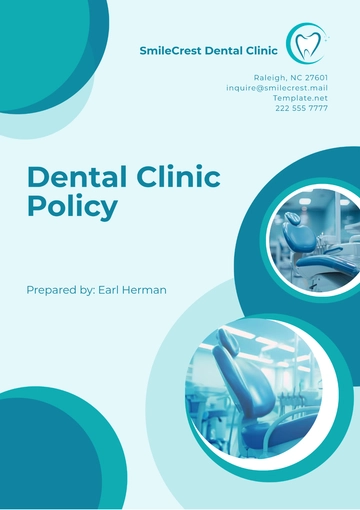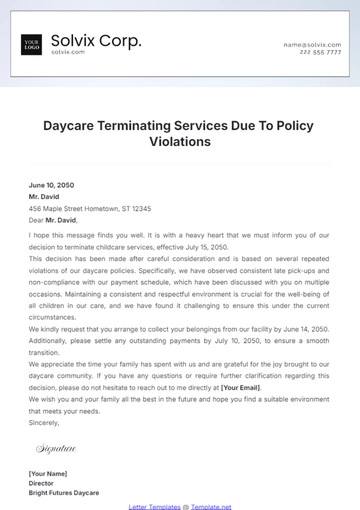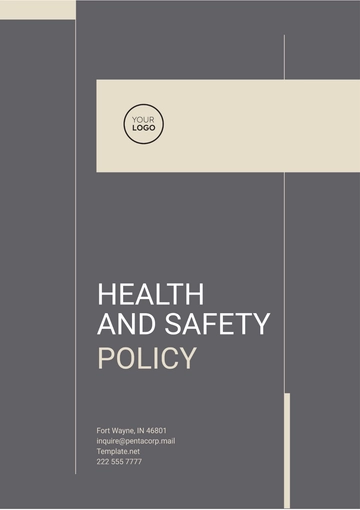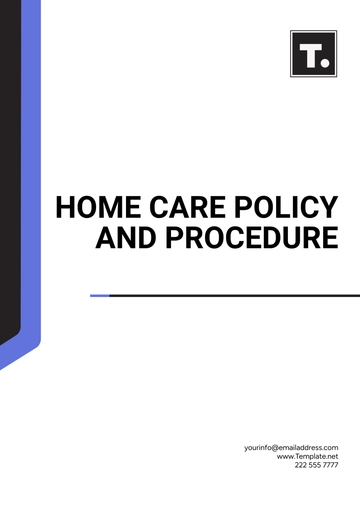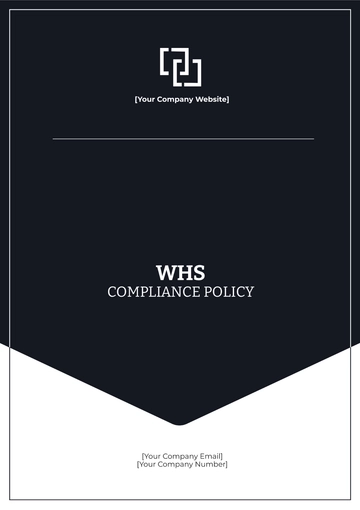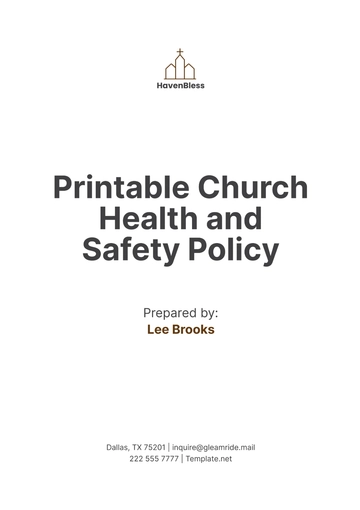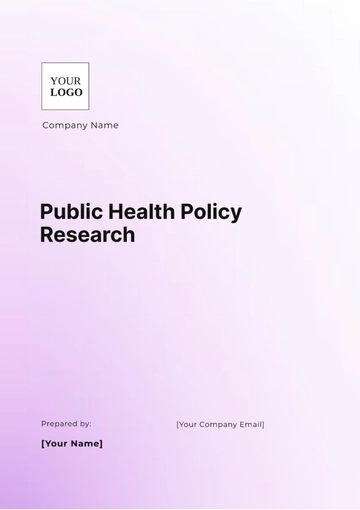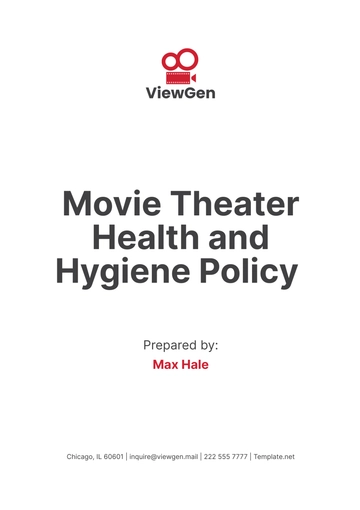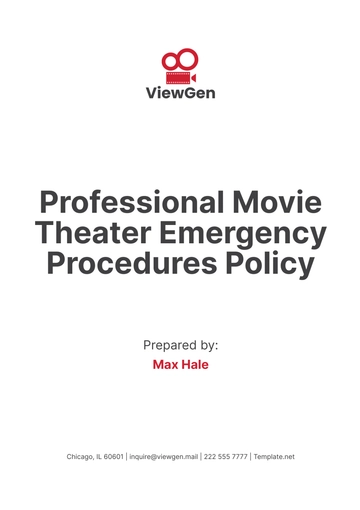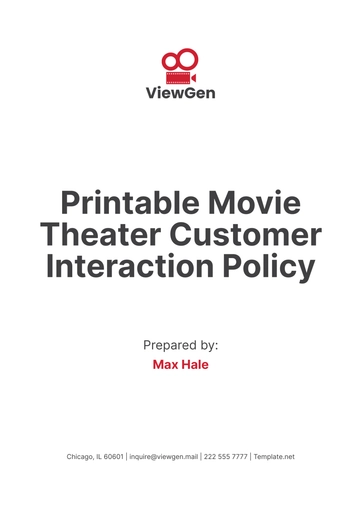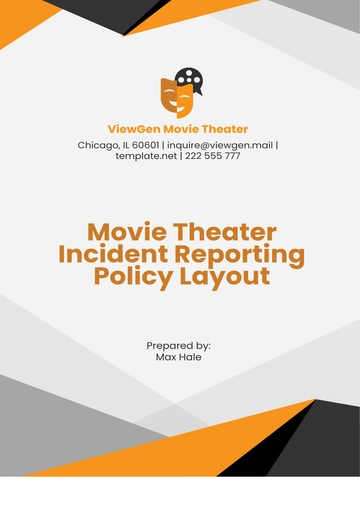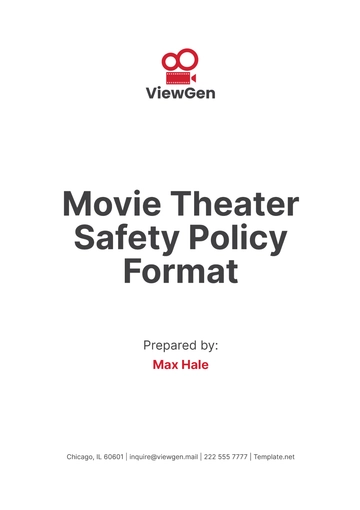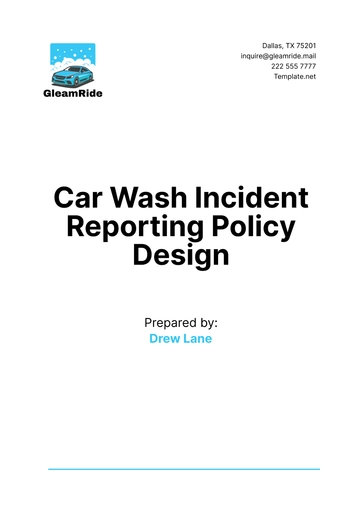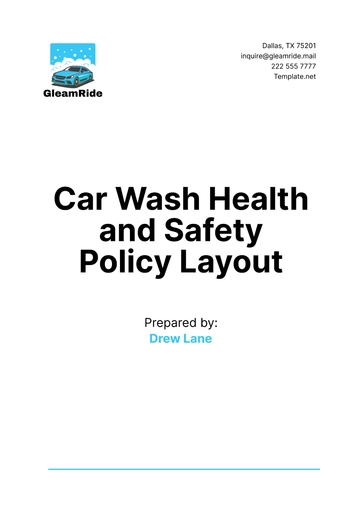Free Nursing Home Safety Policy
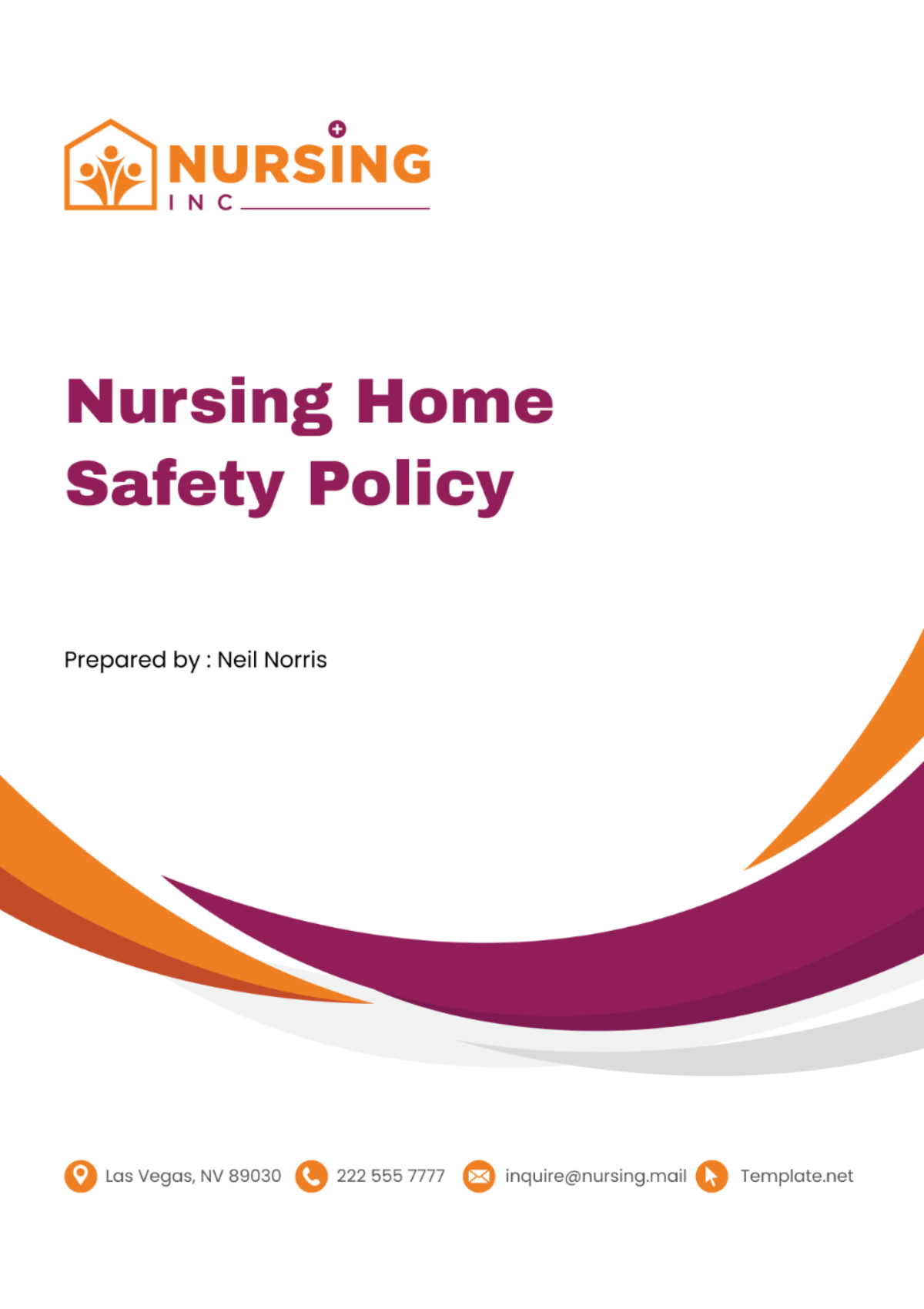
I. Introduction
A. Purpose
The safety and well-being of our residents, staff, and visitors are of paramount importance to [Your Company Name]. This Safety Policy is established to ensure a safe environment within our nursing home facilities by outlining our commitment to preventing accidents, injuries, and hazards.
B. Scope
This policy applies to all employees, residents, visitors, and contractors within [Your Company Name] nursing home facilities. It encompasses all aspects of safety management, including emergency preparedness, hazard identification, resident safety, staff safety, and continuous improvement.
II. Safety Management
A. Safety Responsibilities
[Your Company Name] management is responsible for implementing and overseeing safety protocols to maintain a secure environment within our nursing home facilities. Key responsibilities include:
Role | Responsibilities |
|---|---|
Management | Providing leadership and direction for safety initiatives |
Allocating necessary resources for safety programs and training | |
Ensuring compliance with safety regulations and standards | |
Investigating and addressing safety concerns and incidents | |
Reviewing and updating safety policies and procedures regularly | |
Staff | Following safety protocols and procedures |
Reporting safety hazards, incidents, and near misses promptly | |
Participating in safety training and education programs | |
Cooperating with safety committees and initiatives | |
Residents | Adhering to safety guidelines and instructions provided by staff |
Reporting safety concerns or hazards to staff members | |
Engaging in fall prevention and other safety measures to reduce personal risks | |
Visitors | Following facility safety rules and regulations |
Notifying staff of any safety hazards or concerns | |
Respecting residents' privacy and safety | |
Contractors | Complying with facility safety policies and procedures |
Ensuring the safety of their work and equipment | |
Communicating with facility staff regarding potential safety hazards |
B. Staff Training
All staff members are required to undergo comprehensive safety training upon hire and receive regular updates on safety procedures and protocols. Training topics include but are not limited to:
Emergency response procedures
Hazard identification and control
Infection control measures
Fall prevention strategies
Medication safety protocols
Workplace violence prevention
Ergonomics and safe lifting techniques
Training sessions are conducted by qualified instructors and may include hands-on exercises, simulations, and interactive discussions to enhance staff understanding and competency in safety practices.
New hires receive initial safety orientation during their onboarding process, while existing staff undergo refresher training annually or as needed based on changes in policies, procedures, or regulations.
C. Safety Committees
[Your Company Name] establishes safety committees composed of management, staff representatives, and resident advocates to address safety concerns, conduct safety audits, and recommend improvements. Key functions of safety committees include:
Reviewing safety policies and procedures
Identifying potential hazards and risks
Conducting safety inspections and audits
Investigating accidents, incidents, and near misses
Developing and implementing safety initiatives
Communicating safety information and best practices to staff, residents, and visitors
Safety committees meet regularly to discuss safety-related issues, review incident reports, and collaborate on strategies to enhance safety performance within the facility.
III. Facility Safety Procedures
A. Emergency Preparedness
[Your Company Name] maintains comprehensive emergency response plans to ensure swift and effective actions in various scenarios, including fire, natural disasters, medical emergencies, and evacuations. These plans are developed in accordance with local, state, and federal regulations and are regularly reviewed and updated as necessary.
Emergency exit routes are clearly marked and unobstructed at all times to facilitate safe evacuation. Staff members are trained to assist residents and visitors in evacuating the premises in case of an emergency.
Regular drills and exercises are conducted to test the effectiveness of emergency response procedures and familiarize staff with their roles and responsibilities during emergencies. These drills may include fire drills, evacuation drills, and disaster preparedness simulations.
B. Hazard Identification and Control
[Your Company Name] conducts regular inspections and risk assessments to identify potential hazards within the facility, such as slippery floors, uneven surfaces, faulty equipment, and environmental risks. Identified hazards are promptly addressed and mitigated to reduce the risk of accidents and injuries.
Hazardous materials, including cleaning chemicals and medical waste, are properly stored, labeled, and disposed of according to regulatory requirements. Staff members receive training on safe handling procedures for hazardous materials to minimize the risk of exposure and contamination.
Environmental controls, such as ventilation systems and temperature monitoring, are maintained to ensure a safe and comfortable living environment for residents. Any issues with environmental controls are promptly addressed to prevent health and safety hazards.
C. Infection Control
[Your Company Name] follows strict infection control protocols to prevent the spread of infectious diseases and protect the health of residents, staff, and visitors. These protocols include:
Hand hygiene: Staff members are required to perform hand hygiene using soap and water or alcohol-based hand sanitizer before and after resident care activities, as well as after contact with potentially infectious materials.
Personal protective equipment (PPE): Staff members are provided with appropriate PPE, such as gloves, gowns, masks, and eye protection, for tasks that may involve exposure to blood, bodily fluids, or infectious agents.
Environmental cleaning: Surfaces and high-touch areas within the facility are regularly cleaned and disinfected using EPA-approved disinfectants to reduce the risk of transmission of infectious diseases.
Resident isolation: Residents with suspected or confirmed infectious diseases may be placed under isolation precautions to prevent the spread of infection to others. Staff members are trained on proper isolation procedures and use of isolation equipment.
Infection control practices are monitored and evaluated regularly to ensure compliance with guidelines and standards set forth by regulatory agencies, such as the Centers for Disease Control and Prevention (CDC) and the Occupational Safety and Health Administration (OSHA).
IV. Resident Safety
A. Fall Prevention
[Your Company Name] implements comprehensive fall prevention strategies to reduce the risk of falls and fall-related injuries among residents. These strategies include:
Conducting fall risk assessments for all residents upon admission and regularly thereafter
Implementing individualized care plans based on residents' fall risk assessments, which may include interventions such as bed alarms, toileting schedules, and mobility aids
Providing staff training on proper transfer techniques, safe handling of residents, and environmental modifications to reduce fall hazards
Encouraging residents to participate in strength and balance exercises to improve mobility and reduce fall risk
Environmental modifications, such as installing handrails, grab bars, and non-slip flooring, are implemented to create a safer living environment for residents. Regular maintenance checks are conducted to ensure that environmental modifications remain effective and in good condition.
Fall incidents are thoroughly investigated, and appropriate interventions are implemented to prevent recurrence. Staff members receive education and feedback on fall prevention strategies to continuously improve resident safety.
B. Medication Safety
[Your Company Name] maintains strict medication safety protocols to ensure the accurate and safe administration of medications to residents. These protocols include:
Conducting medication reconciliation upon admission and during care transitions to identify discrepancies and prevent medication errors
Labeling and storing medications properly to prevent mix-ups and contamination
Implementing double-check procedures for high-risk medications or complex medication regimens
Providing staff training on medication administration techniques, including dosage calculation, route of administration, and proper documentation
Conducting regular medication reviews and consultations with pharmacists and prescribers to optimize medication therapy and minimize risks
Residents' medication records are maintained electronically or in paper format, with accurate documentation of medication orders, administration times, and any observed effects or side effects. Any discrepancies or concerns regarding medication administration are reported and addressed promptly.
Residents and their families are educated on medication safety practices and encouraged to communicate with staff members regarding any questions or concerns about their medications. [Your Company Name] promotes open communication and collaboration among residents, families, and healthcare providers to ensure safe and effective medication management.
C. Resident Rights
[Your Company Name] respects and upholds the rights of residents to safety, dignity, and autonomy in accordance with applicable laws and regulations, including the Nursing Home Reform Act and the Residents' Bill of Rights. These rights include but are not limited to:
The right to receive quality care and treatment in a safe environment
The right to be free from physical, mental, and emotional abuse or neglect
The right to make decisions about their own care, including the right to refuse treatment or participate in care planning
The right to privacy and confidentiality of personal information
The right to express grievances and have them addressed promptly and without retaliation
[Your Company Name] promotes resident-centered care and actively involves residents in decision-making processes regarding their care and living preferences. Staff members are trained to recognize and respect residents' rights and preferences and to advocate for residents' well-being and autonomy.
V. Staff Safety
A. Workplace Safety
[Your Company Name] is committed to providing a safe working environment for all staff members, free from hazards and risks that may cause harm or injury. Workplace safety measures include:
Conducting regular safety inspections and hazard assessments to identify and address potential workplace hazards, such as ergonomic risks, slips, trips, and falls, and workplace violence
Providing appropriate personal protective equipment (PPE) and safety devices to staff members, including gloves, goggles, face shields, and ergonomic tools
Implementing administrative controls, such as work practice controls, safe work procedures, and staff training, to reduce the risk of occupational injuries and illnesses
Encouraging staff members to report safety concerns, near misses, and incidents promptly and to participate in safety improvement initiatives
Offering resources and support for staff members who may experience work-related injuries, illnesses, or stress, including access to healthcare services, counseling, and disability accommodations
[Your Company Name] promotes a culture of safety among staff members through ongoing education, training, and communication about workplace hazards and safety practices. Staff members are encouraged to actively participate in safety committees, safety drills, and safety improvement projects to enhance workplace safety and well-being.
B. Violence Prevention
[Your Company Name] has zero tolerance for workplace violence and is committed to preventing and addressing incidents of violence or aggression within the workplace. Violence prevention measures include:
Implementing workplace violence prevention policies and procedures that define prohibited behaviors, reporting mechanisms, and consequences for violations
Providing staff training on recognizing and de-escalating potentially violent situations, including verbal aggression, physical aggression, and threatening behavior
Establishing protocols for assessing and managing risks of violence, including strategies for removing staff members from dangerous situations and obtaining assistance from security or law enforcement as needed
Offering support and resources for staff members who may experience or witness workplace violence, including counseling, debriefing, and legal assistance
Collaborating with community partners, such as law enforcement agencies and advocacy organizations, to address systemic issues related to workplace violence and support victims of violence
[Your Company Name] encourages staff members to report incidents or concerns related to workplace violence promptly and to seek assistance from supervisors, human resources, or security personnel as needed. All reports of workplace violence are taken seriously and investigated promptly, and appropriate disciplinary action is taken against perpetrators in accordance with facility policies and legal requirements.
VI. Continuous Improvement
A. Incident Reporting and Investigation
[Your Company Name] encourages a culture of transparency and accountability by promoting the reporting and investigation of all accidents, incidents, and near misses within the facility. Incident reporting procedures include:
Providing multiple channels for staff members to report incidents, including electronic reporting systems, paper forms, and verbal reports to supervisors or safety officers
Ensuring that incident reports are reviewed promptly by designated personnel, who may include supervisors, safety officers, and members of the safety committee
Conducting thorough investigations of reported incidents to determine root causes, contributing factors, and corrective actions needed to prevent recurrence
Documenting investigation findings and actions taken in response to incidents, including implementation of preventive measures, disciplinary actions, and follow-up monitoring
Communicating investigation outcomes and lessons learned to relevant stakeholders, including staff members, residents, families, and regulatory agencies
[Your Company Name] promotes a non-punitive approach to incident reporting and investigation, encouraging staff members to report incidents without fear of reprisal and focusing on identifying systemic issues and opportunities for improvement. Staff members are trained on incident reporting procedures and encouraged to participate in incident investigations and follow-up activities to enhance learning and prevent future incidents.
B. Safety Performance Monitoring
[Your Company Name] monitors safety performance indicators to assess the effectiveness of safety policies, procedures, and initiatives and identify areas for improvement. Safety performance monitoring activities include:
Collecting and analyzing data on key safety metrics, such as incident rates, near miss reports, safety inspection findings, and compliance with safety regulations
Comparing safety performance data over time to track trends and identify emerging issues or areas of concern
Benchmarking safety performance against industry standards and best practices to evaluate performance relative to peers and identify opportunities for improvement
Conducting safety audits and inspections to assess compliance with safety policies and procedures and identify opportunities for corrective action
Soliciting feedback from staff members, residents, families, and other stakeholders on safety-related issues and initiatives and incorporating feedback into safety improvement plans
[Your Company Name] utilizes safety performance data to drive continuous improvement efforts and prioritize resource allocation for safety initiatives. Safety performance data and improvement initiatives are regularly communicated to staff members, residents, families, and regulatory agencies to promote transparency and accountability in safety management.
C. Compliance and Regulatory Updates
[Your Company Name] stays informed of changes in safety regulations, standards, and best practices relevant to nursing home operations and ensures compliance with applicable requirements. Compliance and regulatory updates include:
Monitoring changes in federal, state, and local regulations related to nursing home safety, including regulations issued by agencies such as the Centers for Medicare & Medicaid Services (CMS), the Occupational Safety and Health Administration (OSHA), and the Centers for Disease Control and Prevention (CDC)
Reviewing industry standards and best practices for safety management in healthcare and long-term care settings and incorporating relevant recommendations into facility policies and procedures
Participating in regulatory inspections, surveys, and audits to assess compliance with safety regulations and address any deficiencies or areas of non-compliance
Providing staff training and education on changes in safety regulations, standards, and best practices and ensuring that staff members understand their roles and responsibilities in maintaining compliance
[Your Company Name] collaborates with regulatory agencies, industry associations, and other stakeholders to address emerging safety issues and develop effective strategies for compliance and improvement. Compliance with safety regulations and standards is a top priority for [Your Company Name], and all staff members are expected to adhere to facility policies and procedures to ensure the safety and well-being of residents, staff, and visitors.
VII. Conclusion
[Your Company Name] is committed to fostering a culture of safety and accountability within our nursing home facilities. By prioritizing safety at all levels, we aim to provide a secure and nurturing environment for our residents, staff, and visitors.
VIII. Contact Information
For inquiries or concerns regarding this Safety Policy, please contact:
[Your Company Name]
[Your Company Email]
[Your Company Address]
[Your Company Number]
- 100% Customizable, free editor
- Access 1 Million+ Templates, photo’s & graphics
- Download or share as a template
- Click and replace photos, graphics, text, backgrounds
- Resize, crop, AI write & more
- Access advanced editor
Prioritize safety with the Nursing Home Safety Policy Template from Template.net. Editable and customizable, it outlines protocols for maintaining a safe environment for residents and staff. Tailor it effortlessly using our Ai Editor Tool for personalized policies. Promote a culture of safety and mitigate risks effectively with this essential template.
You may also like
- HR Policy
- Restaurant Policy
- Company Policy
- Accounting Policies and Procedures
- Website Policy
- Privacy Policy
- Safety Policy
- School Policy
- IT and Software Policy
- Law Firm Policy
- Construction Policy
- Interior Design Policy
- Travel Agency Policy
- Education Academic Policy
- Security Policy
- Real Estate Policy
- Expense Policy
- Software Policy
